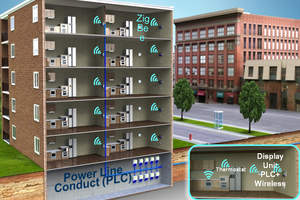
Recently, Brite Semiconductor and Semitech Semiconductor collaborated on the development of an industrial machine-to-machine (M2M) system on chip (SoC) that will help transform the electric grid to the smart grid. The new SoC is designed to support M2M communication in the global industrial and energy transmission market using Semitech’s PLC/wireless modes IP. I talked with Semitech’s CEO, Zeev Collin, about this collaboration and what it means for the design engineer.
EP: Can you give a background on how narrow-band power line comm works now?
Collin : Narrowband Power Line Communication (N-PLC) uses existing infrastructure (power lines) as the medium of communication. It typically operates in transmission frequencies of up to 100 kHz. Within this frequency range, the resulting data rates range from 10s to 100s kbps. These rates are appropriate for monitoring and control applications over medium-range distances.
EP: What do the devices need to be able to do to work effectively?
Collin : Devices must be power efficient; they must be able to operate in harsh noise environments; and they must be flexible − with proven broad applicability.
EP: What do tomorrow’s applications need to be able to do? How can that be accomplished?
Collin : The next evolutionary step for smart grid applications is to move toward heterogeneous PLC/wireless networks while accommodating aggressive cost and power budgets. Basically, the vision for the Smart Grid is a network of integrated microgrids that can manage demand, monitor, and heal itself. In-grid machine-to-machine communication is the key to this.
EP: How can the solutions be made to be cost-effective?
Collin : The metering market is a high-volume, fragmented market with a myriad of protocols/standards. Different geographies adopt different standards, and different applications favor non-standard communication schemes. This makes it difficult to interconnect devices from different manufacturers. In order to be cost-effective, solutions must provide programmable architecture with a high level of integration and control functions to reduce the cost of implementation.
Finally, Mr. Collin said he believes that the next evolutionary step for smart grid applications is to move toward heterogeneous PLC/wireless networks. For more information: www.semitechsemi.com
Advertisement





